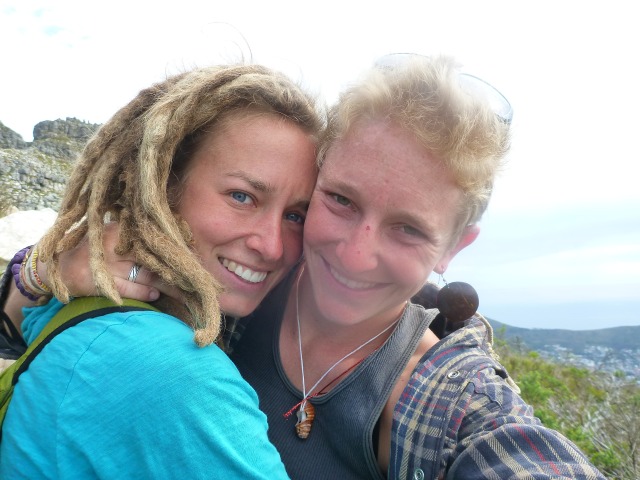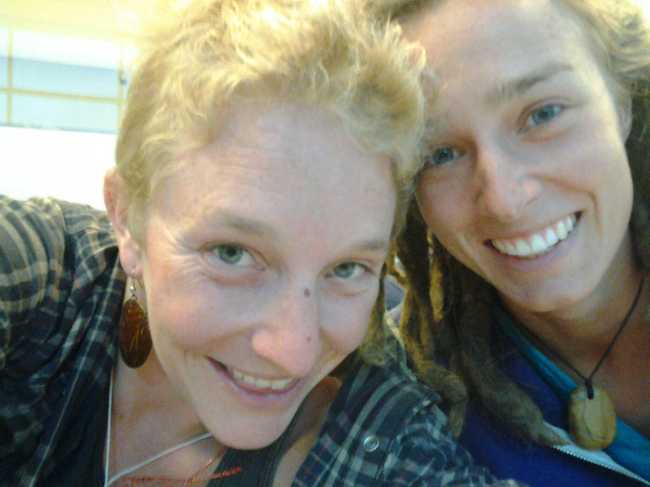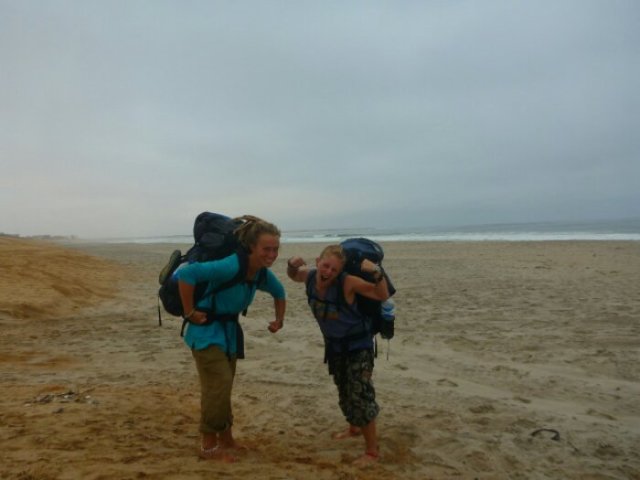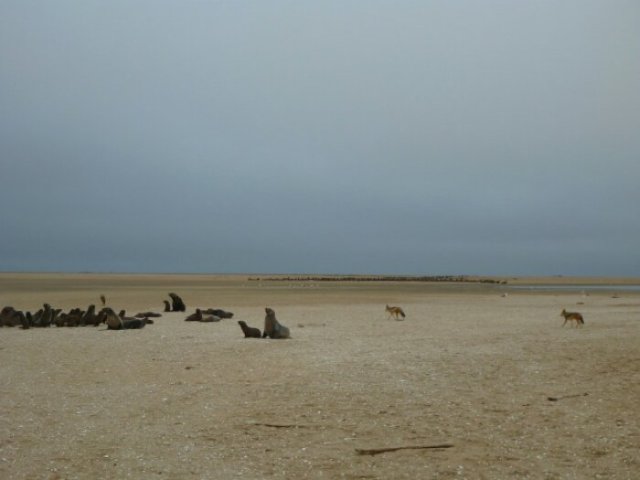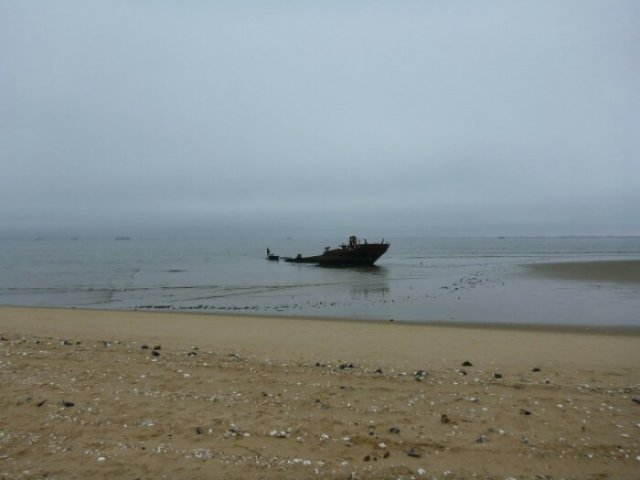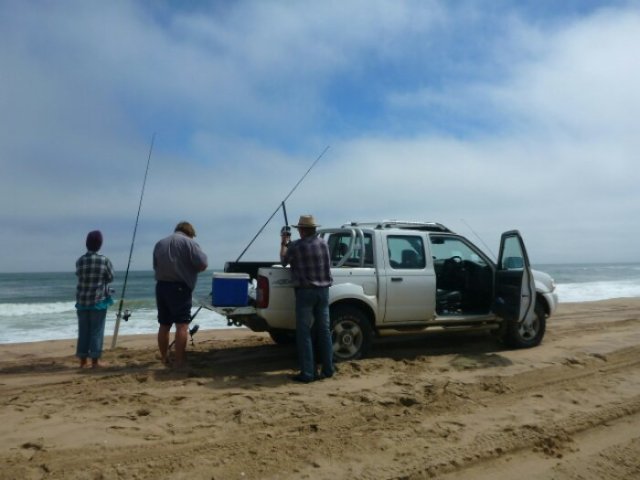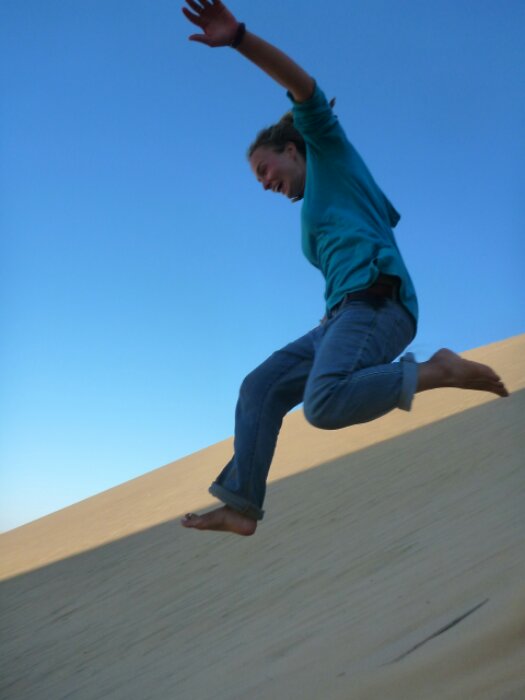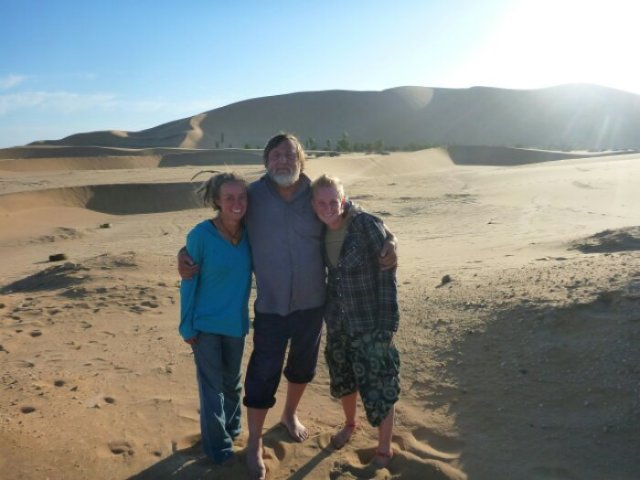For the first two weeks in March, we had the pleasure of being joined on our travels in Tanzania by Rachel’s parents, Lynn and Richard. Not only was it great to spend some time traveling like adults (and not like completely broke backpackers), but we also had a fabulous time with them and were really happy that they were able to come meet us. Here is a summary of our time with them, broken up into 3 segments:
Arusha – written by Rachel
We arrived in Arusha a few days before my parents were to scheduled to arrive (and a day earlier than we had initially planned due to an abandoned CouchSurfing experience in Nairobi) in order to give ourselves time to prepare for their arrival and also to get reoriented to the city. In 2008 I studied abroad in Tanzania through an SIT program and spent a good deal of time in Arusha. I returned in 2010 briefly, so I remembered a good amount, but the city has been developing so quickly that many new buildings and even traffic lights meant that it took a solid day of us walking around for my memory and orientation to fully return. For our first few days in town, before my parents arrived, we stayed with an old friend Hellen who had worked for SIT when I was in the program. She kindly opened her home up to Liz and I and we were happy for the relaxed and comfortable environment. She even let us use her kitchen, which is a real treat during our travels, and we made a Chinese dish we learned about in Phnom Penh as well as apple crisp!
During one of our days in town, we ventured up to Bangata, the small town outside of Arusha where I had lived for 3 weeks during my homestay. Fortunately, my baba’s (father in Kiswahili) phone number hadn’t changed since I last saw my family in 2010 and we were able to tell them we were coming. They were thrilled that I had returned and I was equally excited to see them. The kids are now much older (and taller) than when I lived with them 5 years ago, and I was shocked to learn that there is now a 5th child! While we cooked chapatti (a skill they proudly taught me in 2008) with Tuma, now 20 years old, she told Liz and I that she would be starting college in Arusha in May to study Hotel Management. When Godson, the only boy and the 2nd oldest at 16, returned home from school, I was amazed at how tall he’d grown and how much he resembled his father. But the real reason for our visit that day was to tell them that my parents would be arriving the following day from America and to see if we could all come back to visit on Sunday. Everyone, especially my mama, was thrilled with this and asked me numerous times during my visit if it was really true that my parents were coming. We also stopped by my old school in Bangata and visited all of my teachers from my program who were happy to see me and impressed that I can still speak some Kiswahili!
On March 1st, the day my parents arrived, we moved our stuff from Hellen’s place to the lodge they had reserved rooms in – a really nice place in a quieter part of town that even had a swimming pool (unheard of in our normal accommodation!). Their plane didn’t arrive until 9 pm and the airport is about 45 km from town, but we figured out how to take a shuttle through one of the airlines out to the airport to meet them. I could hardly contain my excitement watching for them to come through the arrivals door, although we did feel a tad bit out of place amongst all of the safari guides waiting for their clients with big signs.
We had the weekend to spend in Arusha, and were planning on heading to Bangata on Sunday, so we had planned to spend Saturday touring around town and letting my parents adjust to the heat, the time difference, and the entirely different culture. In retrospect, our market itinerary might have been a bit aggressive for their first day, but they didn’t let it show as we trekked all over town and visited the used clothing market, a food market, AND the tourist market. We stopped for lunch at some point during the day and at a local spot that Hellen had taken us to a few days before. Unfortunately, they were all out of ugali, but we did get some delicious chapatti, rice, chicken, and beef to share around and sample. That night, to further my parent’s local food education, we went out to a nyama choma joint (the Tanzanian equivalent to a BBQ restaurant). We met Hellen for dinner and we all enjoyed some Tanzanian beers and lots of roast goat, chicken, and chips (not the healthiest, but definitely the most delicious food!).
I had arranged that on Sunday at noon we would arrive in Bangata, so around 11 we began the journey. Fortunately it has been made a lot easier in the past year due to road improvements, but it still involved a walk, followed by a dalladalla ride (dalladallas are the Tanzanian minibus, and as the saying goes, “there’s always room for one more in a dalladalla!”), and then a pikipiki (motorbike) ride up the road to Bangata. When we arrived it was clear that since Liz and I had left 2 days before preparations had been underway for the highly anticipated visit of my parents. Soda had been purchased and Tuma and Mama were busy preparing a feast. For a while, until lunch was ready, we hung out around the house. I introduced everyone and did my best to translate for both families (with the exception of Tuma, who is very shy, and Godson, who is still learning, no one in my Bangata family speaks English). I showed my mom and dad the room that I had lived in, which is now occupied by a new student named Shelby, and the various animal pens out back, as well as the kitchen, which is in a separate room outside of the main house. Neighbors came by to visit and meet all of us, and Babu (grandpa) and Bibi (grandma) also stopped in to meet my parents. For a little while we joined Tuma and Mama in the kitchen and helped with the cooking, but then were ushered back inside the house when lunch was ready. The food was delicious, they had even cooked meat in honor of my parents being there, which was a very special treat. After lunch, my Mama wanted me to help cook chapatti, so we all went out to the kitchen. My parents were eager to help and my Mama was thrilled that they wanted to learn, although admittedly everyone was amused that my dad was helping to cook. When the chapatti was done, we ate more and also shared around some of the R&L Bars (sort of like 7 layer bars, minus 4 layers) that my mom had brought Liz and I from home.
We had also brought with us an assortment of gifts including a Mudflat bag for my mama and baba, some rulers and art supplies for the youngest 3 girls, a soccer jersey for Godson, and a music player for Tuma for when she starts school in May. The music player was a big hit, especially when we showed Godson how to play the SD Card I’d filled with an eclectic collection of American songs, which led to an amazing moment of Bibi outside dancing to Soldier Boy. Lastly, we gave the whole family the game Uno, so for about 45 minutes all 11 of us, plus Bibi, sat around and we taught everyone how to play.
As the day was drawing to a close, we decided that we needed to take some group pictures. Everyone in my Bangata famiy got changed into their best clothes, and we all went out front of the house for a photo shoot. After the obligatory group shots, we spend at least another half an hour taking all sorts of pictures with just about every group of people. Rehema, the middle child who was 5 when I lived there, was especially excited when my mom let her borrow her hat as a prop. Before we left, my mama and baba called us all back inside so they could give my mom and dad presents – a khanga and a Maasai blanket, that they presented to them one by one.
Everyone was full of smiles by the time we had to leave, and my baba, who was heading to work in Arusha, offered to walk with us back down the mountain to the main road. Mama and Anita (the youngest) accompanied us through Bangata, and then said goodbye. Tuma, Rehema and Prisca stayed with us for a bit longer, but then turned back as well. And Baba walked with us all the way down to the road, taking us on many shortcuts through the beautiful banana groves that cover the hills. It had been a long day, but one filled with an amazing amount of laughter and happiness. I felt really grateful to have the opportunity to introduce everyone and my family in Bangata welcomed us so warmly into their homes. They were all very happy to get to meet my parents, but they made me promise that next time we visit, we bring Adam.
Safari – written by Liz
We flew from Arusha to the Serengeti in a tiny little plane that made my heart race and my stomach drop. But we stayed below the clouds and the scenery more than made up for my panic attack-like state. As we took off Mount Meru was visible between a sandwich of clouds and Kilimanjaro was a shimmer of snow fields in the distance. Then we were cruising West over vast plains where the circular boma’s of the nomadic Maasai could be seen sporadically below. Then an abrupt ridge of mountains with trees so green they made the grass look like dust. But those quickly gave way, once again, to the endless plain, this one known as the Serengeti. After only 40 minutes in the air, the plane began its short decent and I gasped as I saw a herd of elephants, a family of giraffes, and a few buffalo from above. We landed in a cloud of dust in the middle of an enormous expanse of grassland.
We were met by our guide for the next four days, Casmir, whose boundless knowledge of the plants and animals we encountered was a little humbling. We piled into our Land Rover and we were off. We quickly found ourselves looking at beautiful birds, distant elephants, and giraffes, and hippos. There were animals everywhere! Literally everywhere we looked there was some sort of large animal that we were close enough to study. I was astonished. Having never been on anything like a safari before, I didn’t really know what to expect (and over the course of this trip, I have learned that things work our best when I keep my expectations low). I assumed that most of what I had heard about safaris was a lot of hype and that we would spend most of our time just driving around “looking” for animals. I didn’t actually expect to see them.
Then, after about half an hour, a call came through on the radio and we raced off. A leopard had been spotted nearby, not far from a road. We drove to the spot where at least 20 other Land Rovers filled with ogling white people were parked. And there in a tree, not 80 feet away, lounged a leopard. We spent the next twenty minutes or so marveling at the huge cat that sat before us. She stretched and lolled her head from side to side lazily while hundreds of cameras snapped her picture. We watched her with our binoculars, marveling at the size of her paws, the position of her legs, her beautiful markings.
Then, all of sudden, she was alert. She stood on the branch and trained her eyes off in the distance, far beyond the parking lot of paparazzi. Before we knew it she jumped out of the tree and was treading stealthily through the grass right beside the road. We drove slowly next to her, tracking her movements in the tall grass. There was a small group of giraffes not far ahead and we wondered if she was hungry enough to risk attacking something so much larger than herself. A little further along we realized what she was really after. A family of three warthogs was drinking by a small pool of water. One of them was much smaller, a baby. We drove carefully to a spot where we could see both the leopard and the warthogs and waited with cameras at the ready. After many long minutes of waiting, she made her move. There was a spray of dust, a squeal, and then the leopard and the baby warthog cart wheeled through the air together. When they landed the warthogs trotted off together while the leopard stood by, looking stunned. The action lasted only a second or two, luckily, both Richard and Rachel caught the entire thing in videos on their cameras. After the leopard cornered the baby warthog, the mother warthog returned and rammed both the leopard and the baby sending them both into the air and stunning the leopard enough that all of the warthogs could escape. Casmir was amazed at what we had seen and pronounced our group lucky. He was right.
Over the next four days of safari-ing, we witnessed many things that none of us had imagined we would see. The first afternoon we spotted our first lions not far from the car, then a herd of elephants taking baths, and a couple of lions getting it on. That evening we went back out and realized that the first wave of the Great Migration had begun. The Great Migration is the seasonal movement of almost 2 million wildebeest and zebra. The line of animals stretched from horizon to horizon and we were often so close that the animals parted around the car, making us feel like we were migrating as well.
In the evening, surprisingly tired considering all we did was ride around in a car all day, we returned to the tent camp that is run by the safari company. This was unlike any “camping” that Rachel or I had ever done. The beds were the nicest we’ve slept in this entire trip, there were hot water showers and toilets in each tent, and the towels were soft and smelled like soap. We were served incredibly large and delicious mostly Western meals which we ate by candlelight in the dining tent. We wished that we had more time to relax around the camps, but we were too busy looking for animals to relax.
The second day was also spent in the Serengeti. Highlights included a lot of time with the zebras and the wildebeests, hippos rolling over, many lions, baboons, and birds. And don’t get me wrong, though we did spend most of our time looking at animals, the scenery was stunning and easily would’ve been enough to keep me happy on its own.
On the third day we packed up our belongings and piled in the Land Rover for a longer drive to a new campsite, this one in Ngorongoro Crater. On our way out of the park we passed more lions, some hyenas, and many antelope and impalas. About mid way on our drive we stopped at Oldupai Gorge, where the earliest human fossils were found. We walked around the museum, listened to a talk, and took in the view of the gorge.
Just an hour later we were at the rim of the crater. The Ngorongoro Crater was formed when a mountain about the same size of Kilimanjaro erupted and collapsed on itself between 2 and 3 million years ago. The crater is the largest unbroken caldera in the world and encloses an area of 100 square miles. It contains a lake as well as grassland and a small forest, making it a perfect habitat for many of the grazing animals we were already familiar with. And where there are grazers there are also…predators! The animals are much denser in the crater than in the Serengeti so it is easier to spot the action.
After lunch on the rim of the crater, and a nice little rain storm, we descended to see what we could see. On that first afternoon we spotted many zebra, wildebeest, impala, antelope, elephants, flamingos, a couple of rhinos, and, our excitement for the day, a pride of lions gorging themselves on a freshly killed buffalo. There were 8 lions of various sizes staked out around the carcass. Two or three would eat while the others rolled in the grass trying to digest so they could eat some more. Their stomachs were massive and they seemed groggy whenever they stood to stretch. We learned that they had killed the buffalo around 7 that morning…it was now 5. They had been eating all day! And they weren’t even close to being done.
The next morning we woke up early, hoping to see more animals. We drove into the crater which just the faintest light of dawn. We stopped by the buffalo carcass and found the lions still there, now more than 11 of them, stomachs even larger than the day before. We guessed that they would be finished eating soon and turn the carcass over to the hyenas and jackals who were circling, waiting their turn. By lunchtime we were beat and felt like we had seen enough animals to keep our heads spinning for awhile. We returned to camp and in the afternoon went to visit a nearby Maasai boma.
Zanzibar – written by Liz
After four days of safari it was time to say goodbye to Casmir and to journey to Zanzibar for the final chapter of our adult vacation. We boarded another tiny airplane (smaller even than that first!) and flew to Zanzibar (making two nerve racking stops along the way—it didn’t help that we were seated behind the pilot who was younger than us and played tetrus the whole time). We rented a car and Richard drove us out to the village of Bwejuu on the East coast. We were the only guests at our small bungalow bed and breakfast for the next three nights.
Despite some overcast and rainy weather, we spent the next couple of days exploring the villages and beaches of the island. We went on long drives (sometimes pushing the car through muddy rice paddies and crossing our fingers that there would be pavement again), swam in sparkling waters, lounged and read, ate too much seafood, and played many overly competitive games of cards.
On the third day, in the midst of a flash flood, we drove back to Stonetown, the heart of Zanzibar Town, the only city on the island. We navigated through flooded streets to a nice hotel. We spent the rest of that day and the morning of the next exploring the twisted alleys and streets of Stonetown, shopping for souvenirs, and admiring the many carvings that adorn all wooden surfaces throughout the city.
Then we were on the ferry headed back to the mainland and to Dar es Salaam, the last stop on the Freierman’s whirlwind tour of Tanzania. We arrived in the evening with only enough time to repack bags, shower, and eat Indian food, before it was time to say our goodbyes.
Despite all that we managed to do in the two weeks that Rachel’s parents were with us, it seemed that the time went by way too fast! We thoroughly enjoyed their company and it was great to be traveling with other people again. We are very happy and grateful that they were able to make the trip over to join us.
Please enjoy the massive collection of pictures below. They’ll be more to come, but here’s a taste. Sorry that they’re a bit out of order!
-

-

-
Zebras in the migration
-

-

-

-
On the edge of Ngorongoro Crater
-

-

-
Lion devouring a buffalo carcass
-

-
Rain in the Crater
-

-

-
Hanging out in camp near the crater
-

-

-

-

-
Jackals
-

-

-
Crowned Crane
-

-

-
Mom and Dad
-

-
With Casmir, our guide
-

-

-
Warthog
-

-
Crowned Crane
-

-
Rachel with her teachers in Bangata
-

-
Mom and Dad learn how to make chapatti
-

-
Rachel’s dad rolling out chapatti with Prisca and Mama
-

-
In the kitchen
-

-
Anita and Prisca dressed up for pictures
-

-
From left to right: Bibi, Tuma, Lynn, Richard, Rehema, Liz, Baba, Anita, Mama, Prisca, Rachel, Godson
-

-
Rachel’s Bangata family
-

-
Two mamas!
-

-

-
Rachel’s dad with Rehema and Prisca
-

-
Rachel with Godson
-

-

-

-
Hugs goodbye
-

-
Wine in Arusha
-

-
They brought us bagels and lox!
-

-
Boarding a plane to the Serengeti!
-

-
Tiny plane!
-

-
Kilimanjaro behind Mt. Meru
-

-
Leopard heading off to hunt
-

-

-
Road in the Serengeti
-

-

-

-

-

-
Outside our tent in the Serengeti
-

-

-
view from our tent
-

-

-

-
Picnic lunch!
-

-

-

-

-
One of our “tents” on safari!
-

-
tough life…
-

-
Oldupai Gorge
-

-

-
Above Ngorongoro crater
-

-

-

-

-

-

-

-
Picnic breakfast after an early morning drive into the Crater
-

-

-
hot water bottles in our beds!
-

-
We were not happy to see our pilot playing Tetris while flying!
-

-
In Bwejuu, Zanzibar
-

-
Lobster dinner
-

-
Rachel’s parents enjoying some warm, blue water!
-

-

-

-
Happy man
-

-

-
Very white sand
-

-

-
2 delicious beverages!
-

-
Outside our place in Bwejuu
-

-
stuck.
-

-
our driver scouting out the puddles…
-

-

-

-

-
Lounging in Stone Town
-

-
This adult life is getting to her…
-

-
Walking around Stone Town
-

-
Coffee in Stone Town
-

-
Alley in Stone Town
-

-

-
One of the many doors of Stone Town
-

-
Hotel in Stone Town
-

-
Napping or writing postcards?
-

-
Food Market in Stone Town
-

-

-

-
Chatting with Adam!
-

-

-
Pringles!
-

-
nyama choma with Hellen
-

-

-

-

-

-
The Great Migration
-

-
































































